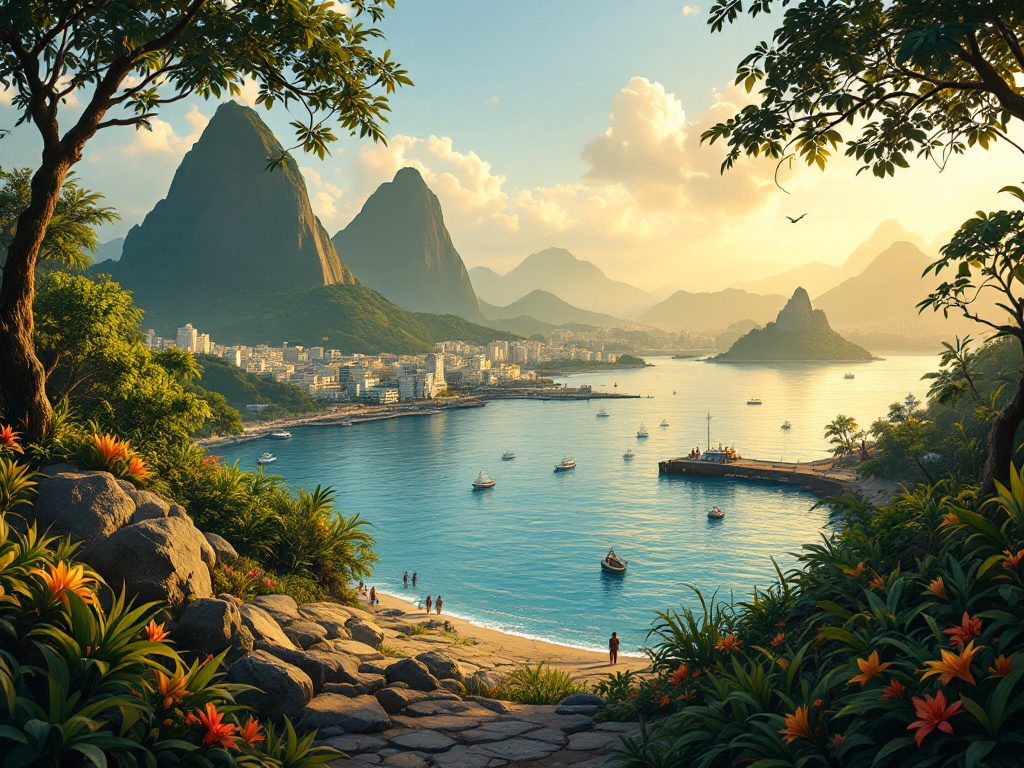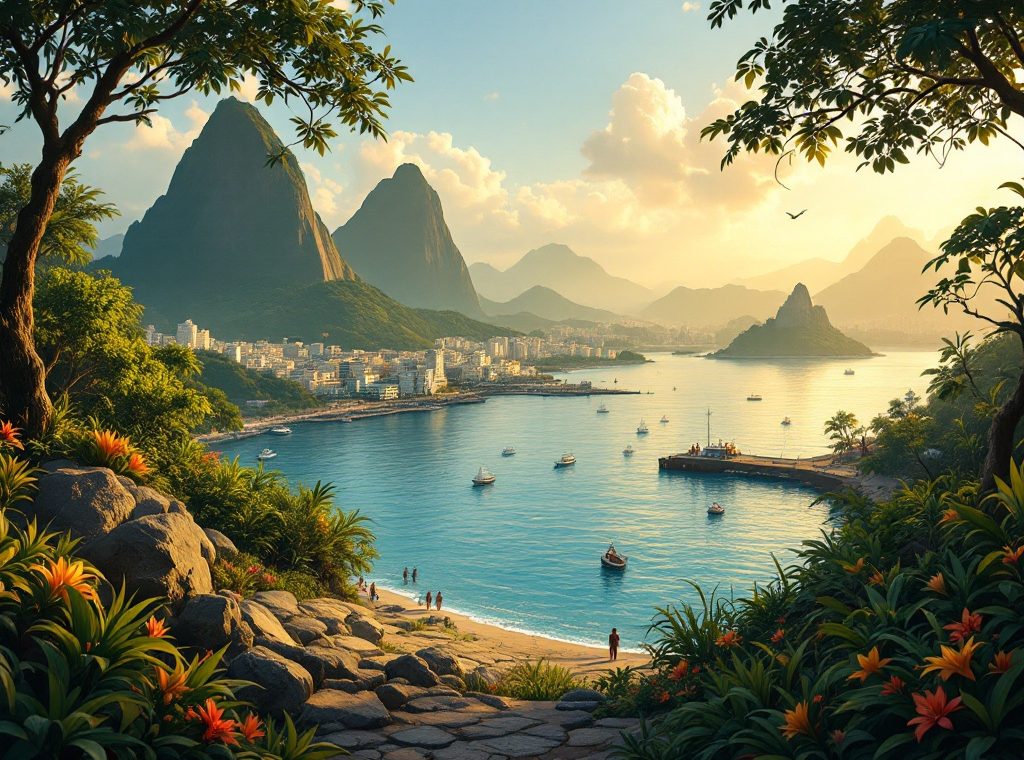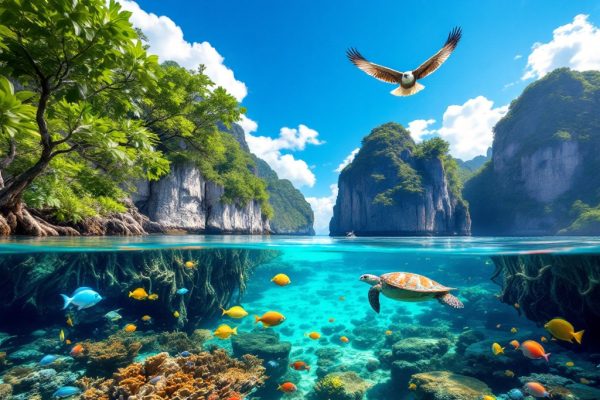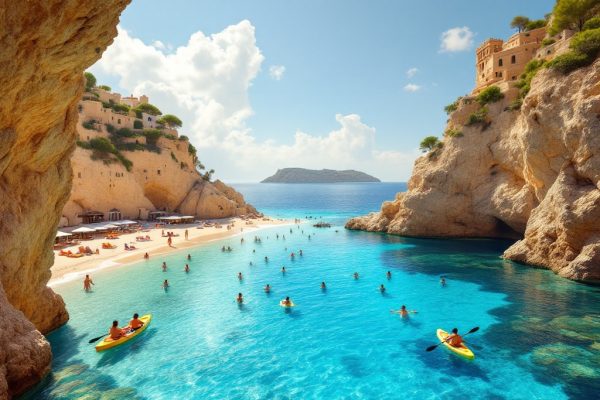What History Is Hidden in the Guanabara Bay in Brazil
Discover the captivating secrets of Rio de Janeiro’s Guanabara Bay! From prehistoric indigenous settlements to a pivotal port in the transatlantic slave trade, this bay holds a rich and complex history. Explore the impact of European colonization, the legacy of the Tupi-Guarani people, and the archaeological treasures hidden beneath the surface. Uncover the stories of Valongo Wharf and Little Africa, and delve into the bay’s vital role in shaping Brazilian culture and trade. Dive into this fascinating journey through time and uncover the hidden history of Guanabara Bay.
Important information

- Guanabara Bay was vital to indigenous groups like the Tupi-Guarani, providing food, resources, and spiritual significance.
- The Portuguese arrival in 1502 transformed the bay into a major port, shaping Rio de Janeiro’s development and boosting trade with Europe.
- Valongo Wharf, within the bay, served as a major entry point for the transatlantic slave trade, with almost 900,000 enslaved Africans brought through it.
- The bay holds archaeological evidence of prehistoric settlements, including remnants of early inhabitants and diverse animal life.
- Sites like Valongo Wharf, Praça Mauá Square, the Memorial of the New Blacks, and Little Africa offer insights into the bay’s complex history and cultural heritage.
The Hidden History of Guanabara Bay
Guanabara Bay, nestled in Rio de Janeiro, Brazil, boasts a captivating history. Archaeological findings unveil traces of early human settlements along its edges. The arrival of Portuguese colonists in the 16th century marked a turning point, transforming the bay into a crucial port. This facilitated trade and exploration, significantly influencing Rio de Janeiro’s growth.
Historical Significance of Guanabara Bay
Guanabara Bay, a crucial port influencing trade and exploration, was first sighted by Europeans on January 1, 1502. This pivotal discovery shaped the development of Rio de Janeiro. Indigenous peoples depended on the bay’s resources for survival. Its strategic location significantly impacted colonial history and the region’s socio-economic growth. The bay continues to be an important landmark today.
Indigenous Peoples and Cultural Heritage
Guanabara Bay played a vital role in the lives of indigenous peoples, especially the Tupi-Guarani. They depended on its rich fish population for food, and its surrounding forests provided essential resources like wood for building and crafting tools. The bay also held profound spiritual significance, influencing their rituals and belief systems.
Role of Tupi-Guarani and Other Indigenous Groups
Guanabara Bay was a lifeline for the Tupi-Guarani, Goitacá, and Temiminó peoples. Its abundant fish and shellfish, along with the flourishing plant life along its shores, shaped their diets, social structures, and spiritual beliefs. The bay also served as a vital waterway, connecting communities and facilitating trade and communication.
Resources and Lifeways Supported by the Bay
The bay was a lifeline for the Tupi-Guarani and other indigenous groups. It provided sustenance with its abundant resources, including fish, shellfish, and marine plants. The surrounding vegetation offered materials for building shelters and crafting tools. The bay also served as a crucial transportation route, facilitating trade and communication between communities.
Colonial History and European Encounter
Europeans first arrived in Guanabara Bay in 1502 with a Portuguese fleet led by Gonçalo Coelho. A little over fifty years later, in 1555, French colonists established France Antarctique, leading to a conflict between the Portuguese and the French for dominance. These European intrusions significantly changed the bay and drastically impacted the lives of the indigenous people.
The Arrival of Portuguese Settlers
Portuguese settlers first discovered Guanabara Bay in January 1502, marking the beginning of their growing presence in the region.
Impact of French Colonists
French colonists arriving in Guanabara Bay traded and interacted with indigenous groups, significantly altering the area during this early colonial period. This French influence shaped the region’s subsequent development.
Maritime History and Trade
Guanabara Bay’s strategic location made it a key port, boosting trade, especially during colonial times. Underwater archaeology reveals fascinating artifacts, including shipwrecks, tools, and pottery, shedding light on maritime history and trade routes. These finds offer glimpses into past lives and highlight the bay’s importance in Brazilian history. Valongo Wharf, within the bay, played a crucial role in the transatlantic slave trade, a dark chapter essential to the bay’s story.
Guanabara Bay as a Major Port
Guanabara Bay was a crucial link between Brazil and Europe, facilitating the trade of commodities like sugar and gold. Tragically, this waterway also played a significant role in the transatlantic slave trade, transporting enslaved Africans. Furthermore, the bay’s strategic location made it essential for naval defense during colonial times, establishing it as a hub for military activities.
The Trans-Atlantic Slave Trade and Valongo Wharf
Valongo Wharf, located in Guanabara Bay, serves as a poignant reminder of the transatlantic slave trade. Between 1811 and 1831, close to 900,000 enslaved Africans were brought through this point of entry. This period significantly influenced Brazil’s cultural and social landscape, leaving a lasting mark on the nation’s maritime history.
Archaeological and Cultural Sites
Valongo Wharf and Praça Mauá Square are vital historical landmarks that narrate a powerful story, particularly through the poignant Memorial of the New Blacks and Little Africa. These sites commemorate the transatlantic slave trade’s devastating impact. The bay’s history, however, stretches back even further, to prehistoric indigenous settlements. Archaeological findings, including remnants of these settlements and various artifacts, offer glimpses into their lives and cultural practices, deepening our understanding of the region’s rich history before European contact.
Valongo Wharf and Praça Mauá Square
Valongo Wharf, located in Rio de Janeiro’s Praça Mauá Square, served as the principal port of entry for enslaved Africans brought to the Americas. Today, it stands as a poignant memorial, prompting reflection on this painful chapter of history and honoring the individuals whose lives were tragically disrupted.
The Memorial of the New Blacks and Little Africa
The Memorial of the New Blacks stands as a moving tribute to enslaved Africans.
Little Africa showcases the vibrant Afro-Brazilian culture and its profound influence on Rio de Janeiro.
Together, these sites illuminate Brazil’s complex history and celebrate the enduring resilience of its people.
Archaeological Findings and Prehistoric Use
Archaeological discoveries around Guanabara Bay reveal traces of ancient inhabitants. Fossils of small marsupials, along with terrestrial mollusks, birds, and reptiles, unearthed at various sites, paint a picture of the bay’s vibrant past. These discoveries include:
- small marsupials,
- terrestrial mollusks,
- birds, and
- reptiles.










